Friday, July 31. 2015

A pale blue sky, whimsical clouds, a grey horizon and flat water and a long white jetty out to sea made for perfect diving at Port Hughes.
Photo: Robert Rath, 'Nice Day for A White Jetty' 1/100s f/11 ISO100 17mm
Thursday, July 30. 2015
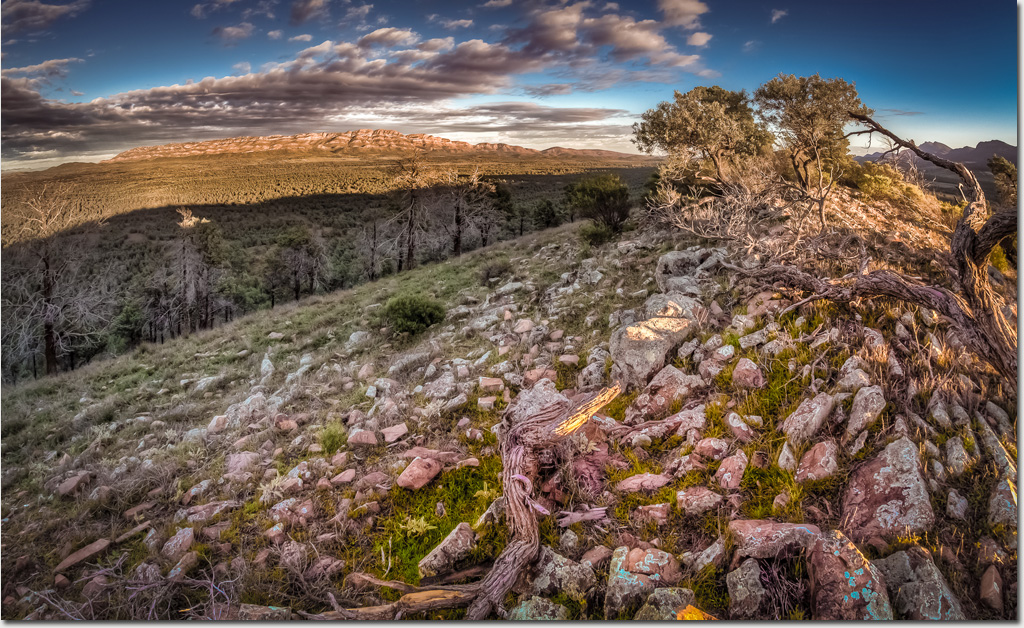
As the sun rose behind me a great shadow raced down from the distant ridge-top of the Elder Range.
It was breathtaking the speed it moved but that was nothing to compared to the way it raced away from the base towards me across the eucalyptus and native pine scrub below.
As the shadow got nearer it began to slow to a crawl while the storm clouds in the west gathered and followed in pursuit.
Photo: Robert Rath, 'An Elder Morning' 1/10s f/16 ISO100 15mm
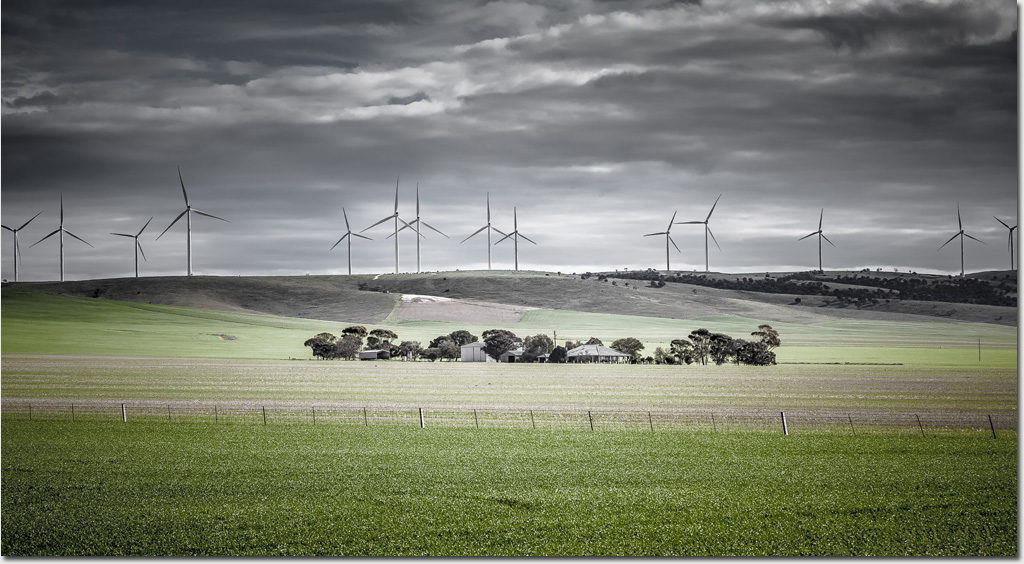
There is so much controversy, misdirection and plain old fallacy about the ill affects of wind generated power.
Some people complain of sleepless nights, nausea, headaches and a loss of general well-being if a power generating turbine is part of their visual landscape.
Funny how those people with turbines on their own land and who collect a tidy rent seemed to sleep perfectly sound and no ill health is anywhere to be seen.
Perhaps if the naysayers got the exhaust from their preferred coal powered electricity pumped through their homes they would feel differently about sleeping with the real enemy.
Photo: Robert Rath, 'Sleeping With The Enemy' 1/500s f/10 ISO320 105mm
Tuesday, July 28. 2015
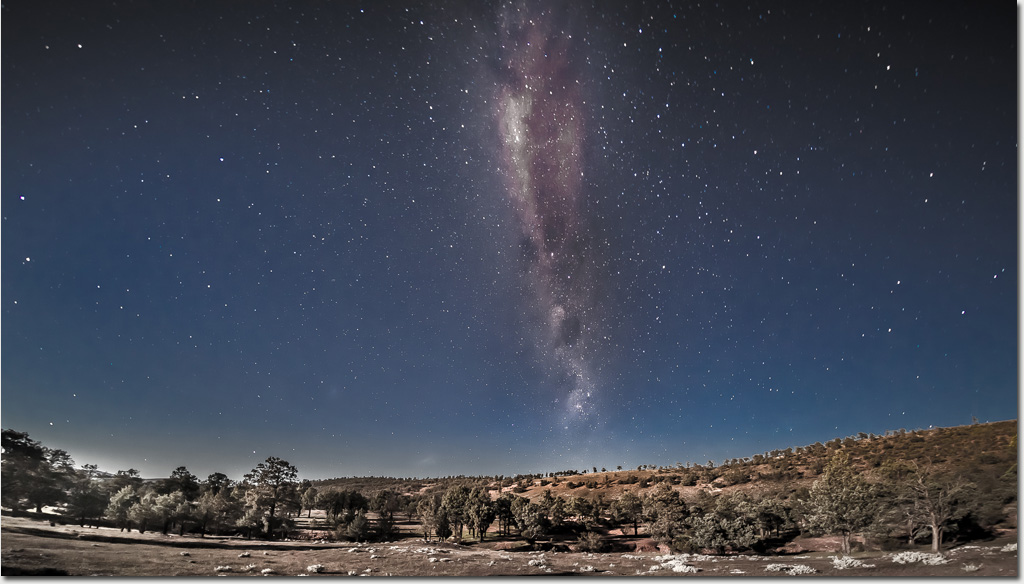
Up here in the Flinders Ranges the winter night sky is so dark that even a moonlit landscape can't wash away the spectacle of the Milky Way Galaxy.
Even the distant galaxies LMC and SMC can clearly be seen just above the ridge-top to the left of the scene as fuzzy cottontball blobs.
All this captured in a simple single 60 second image just makes me want to go back for more.
Photo: Robert Rath, 'Under a Southern Winter Sky' 60s f/2.8 ISO1600 15mm
Sunday, July 26. 2015
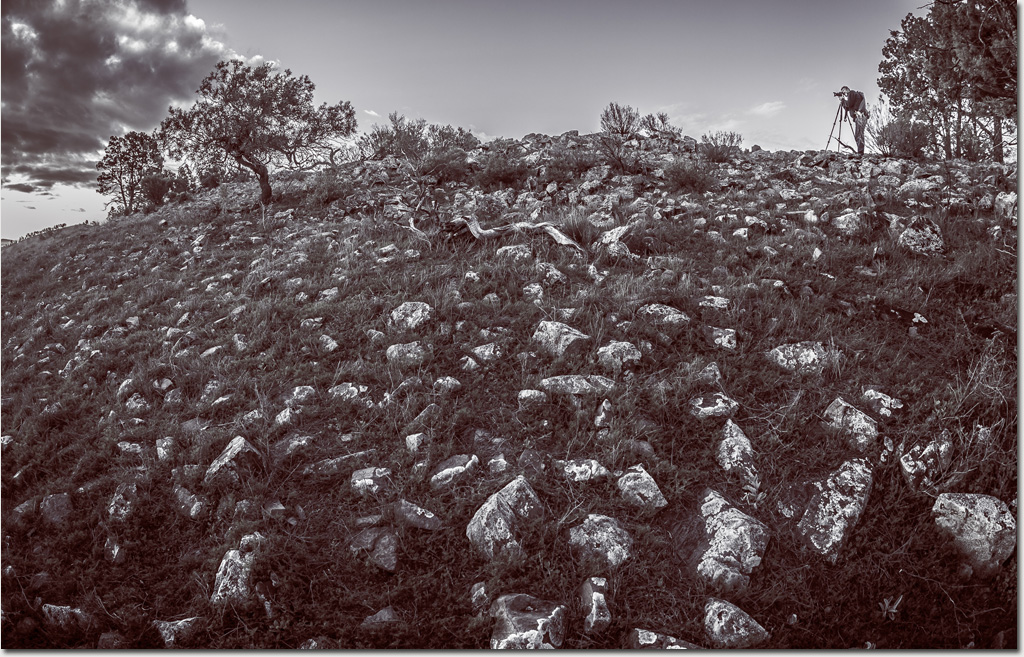
It's nice being able to share an experience of being somewhere wild and out of the way. That is why good landscape images are so compelling.
It's also fun to share the actual experience of being there with friends. This image is proof that Gavin actually did make it to the top in time to enjoy some of that Flinders Ranges sunset goodness from up high.
Photo: Robert Rath, 'Out in the Wild' 1/80s f/8 ISO160 15mm
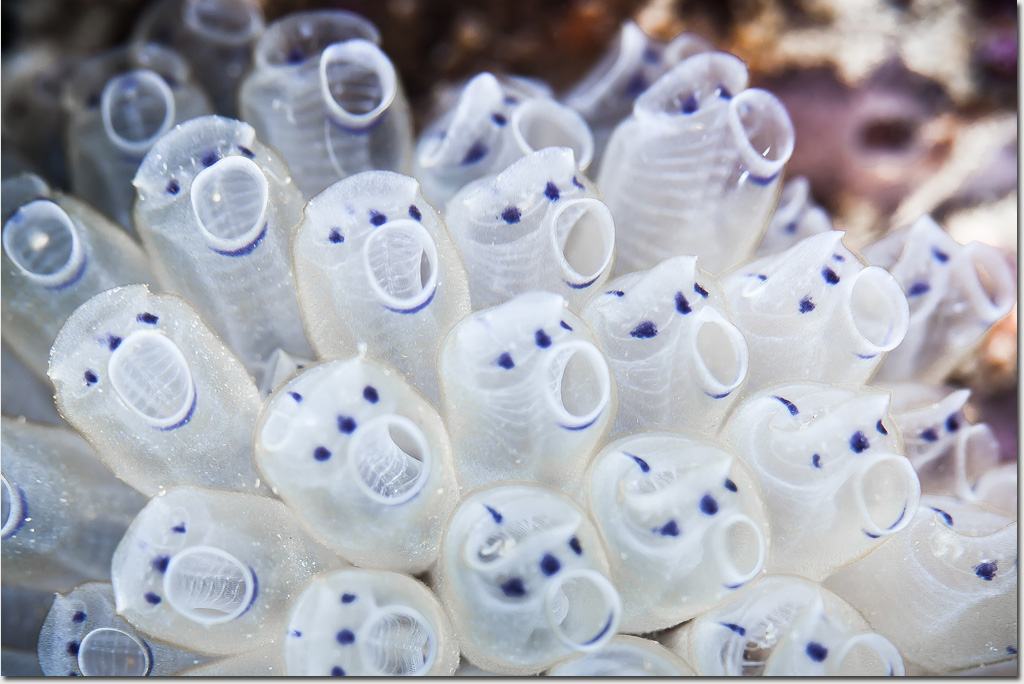
These little critters are Blue Throat Ascidians ( Clavelina australis) and live in compound clusters.
They look like a nest of little chicks of some bizarre bird with mouths agape chirping for food.
Actually just like birds these critters are chordates and though they don't really have a backbone they do have long nerve running the length of their body making for a rudimentary spinal cord.
Photo: Robert Rath, 'Mouths Agape' 1/200s f/18 ISO100 100mm
Saturday, July 25. 2015

Biscuit Stars, Tosia australis, come in all sorts of colour variations.
This beautiful purple star under Rapid Bay Jetty reminded me of a gingerbread man with its striking orange internal markings.
Sea stars are not perhaps the most exciting of undersea critters and are often overlooked by divers who miss out on their intricate beauty.
Photo: Robert Rath, 'Gingerbread Man' 1/200s f/18 ISO100 100mm
Monday, July 20. 2015
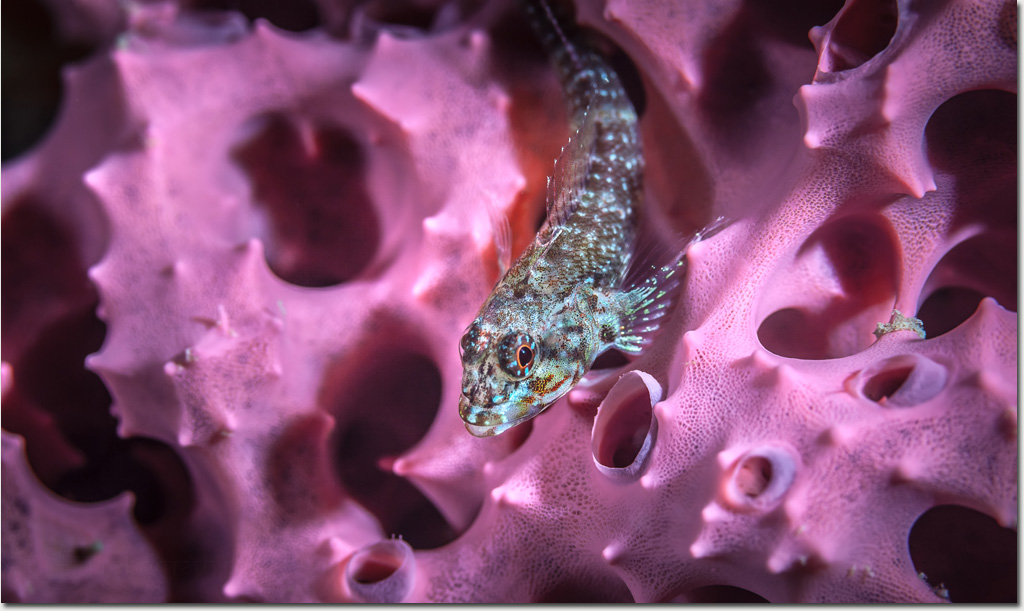
Nestled inside a pocket of alien pink landscape is a Castelnau's Goby, Nesogobius pulchellus
Like all gobies this one is cute, curious and you can almost imagine it wanting to startup a conversation.
Make a sudden move though and in the blink of an eye there will only be an empty pink grotto.
Photo: Robert Rath, 'Pink Grotto' 1/200s f/18 ISO100 100mm
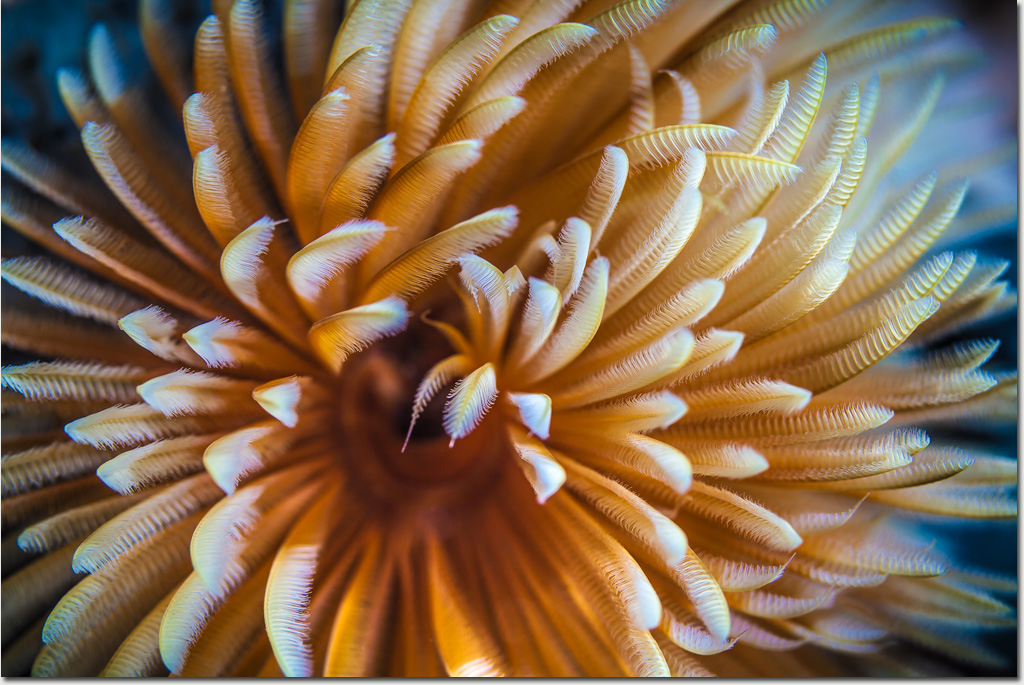
This feathery looking thing is actually a worm. It's a Southern fan worm Sabellastarte australiensis
Sometimes they are even called Feather Duster Worms and just like its cleaner namesake those appendages sweep the water clean hoping to find nutrition in the suspended particles floating by.
Photo: Robert Rath, 'Feather Duster' 1/200s f/32 ISO100 100mm
Saturday, July 18. 2015
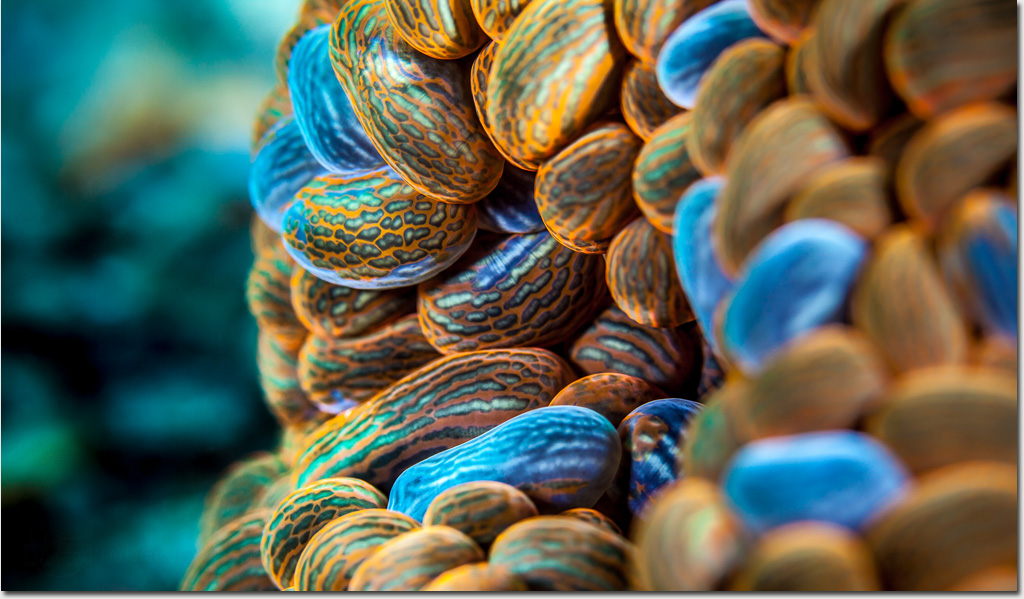
The conditions today at Rapid Bay were sensational with 15m visibility. I so wished I had set up for wide angle but today's dive was a macro gear shakedown.
Immediately on our decent we came across this beautiful Swimming anemone, Phlyctenactis tuberculosa. The fact that this macro image make it look like fluorescent coffee beans is purely coincidental.
Photo: Robert Rath, 'Swimming Anemone' 1/200s f/32 ISO100 100mm
Friday, July 17. 2015
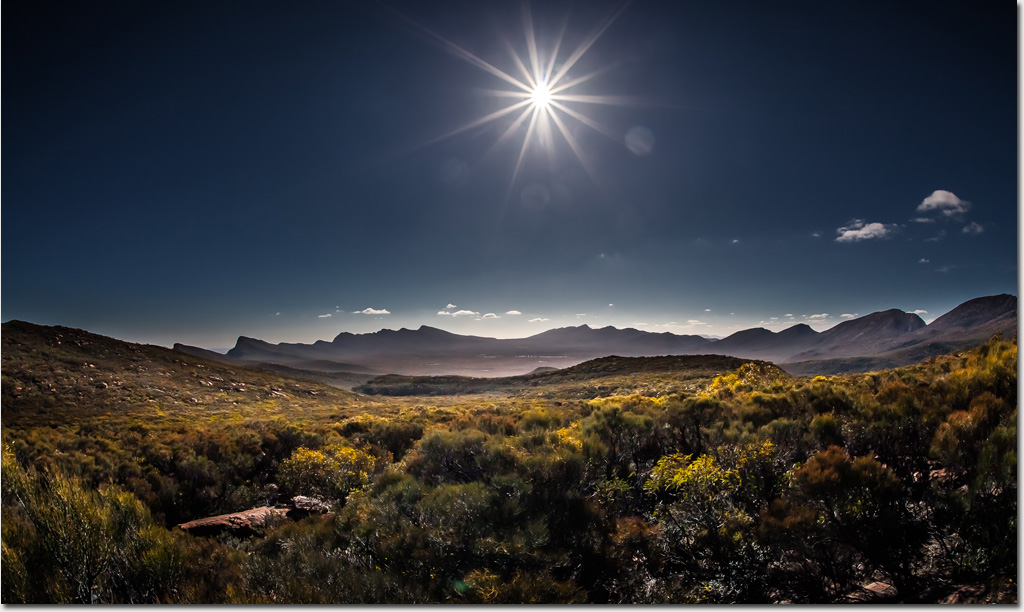
The beautiful Wilpena Pound is an ancient geological formation which looks like a giant crater and is something of a temperate oasis in the semi-arid Flinders Ranges.
Off in the distance what appears to be a gentle saddle separating left and right sides is the incredible Edeowie Gorge. The small triangular peak a little to the right is St Mary's Peak, the highest point in the Flinders Ranges. Our look out here is the southern pound wall with Rawnsleys Bluff behind us.
All of it under the spotlight of an outback Australian sun.
Photo: Robert Rath, 'Spotlight On the Pound' 1/2500s f/14 ISO400 15mm
Thursday, July 16. 2015
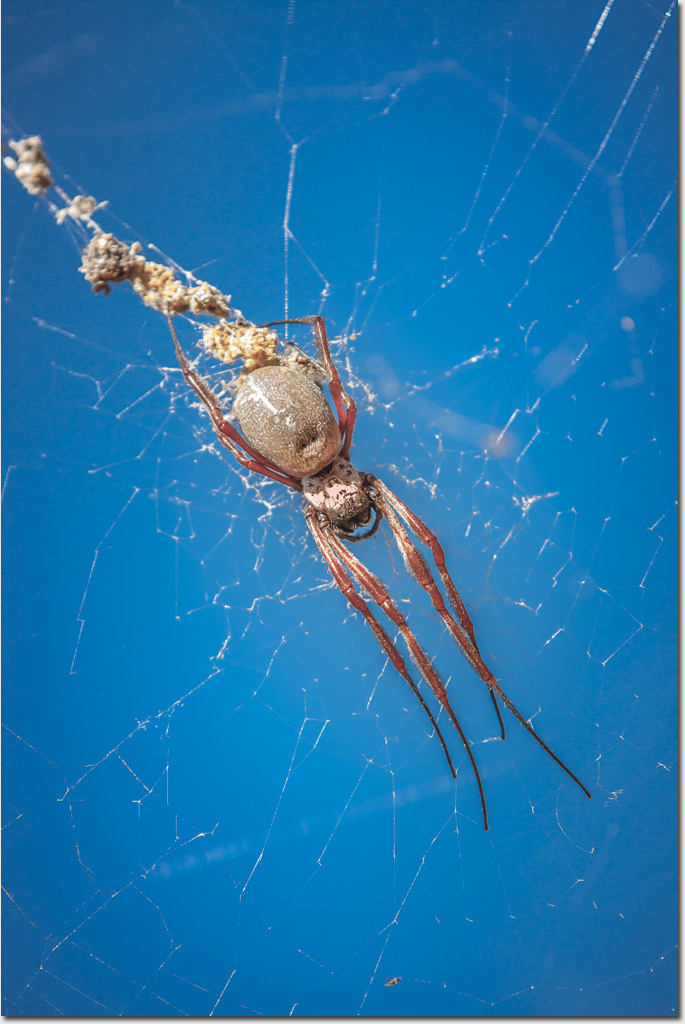
When I was thirteen years old I remember being on a walk in the Flinders Ranges and walking into a great big net spread between two trees. I also remember that it did not break and I had to extricated myself from it by walking out backwards. It was the web of a Golden Orb Weaver, Nephila edulis.
After the incident we looked all around but the web's owner was no where to be seen and I spent the rest of the day dreading she had stowed away in my pack and would seek retribution later. Fortunately that did not pass.
This time I saw her first high up in her web. With legs as long as my fingers and a body as big as my thumb she was awesome in her own arachnid way. This time I was happy to only interact with my camera and then leave her in peace.
Photo: Robert Rath, 'The Golden Orb Weaver' 1/250s f/4.5 ISO100 200mm
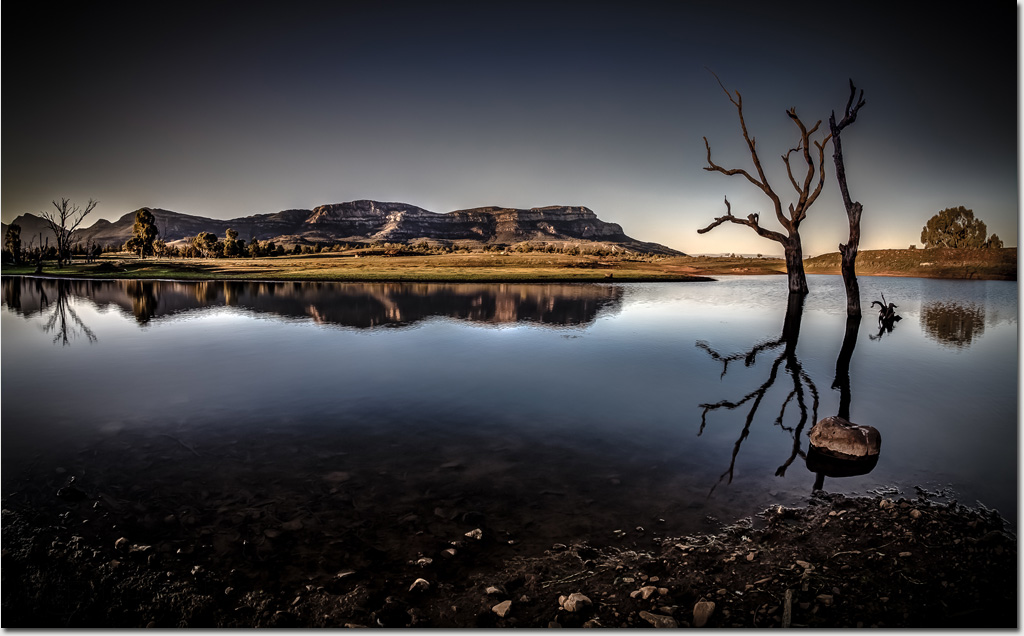
The southern wall of Wilpena Pound is fortified with the Rawnsley Bluff escarpment.
Anyone approaching the pound from the south gets to watch it rise larger and larger until it looms above them on their left as they make their way up the eastern side.
This region of South Australia is considered arid and only good for sparse livestock so a body of water like this within Rawnsley Park Station makes a beautiful counterpoint to the rugged semi-desert landscape.
Photo: Robert Rath, 'Rawnsley Reflection' 1/40s f/13 ISO10 15mm
Tuesday, July 14. 2015
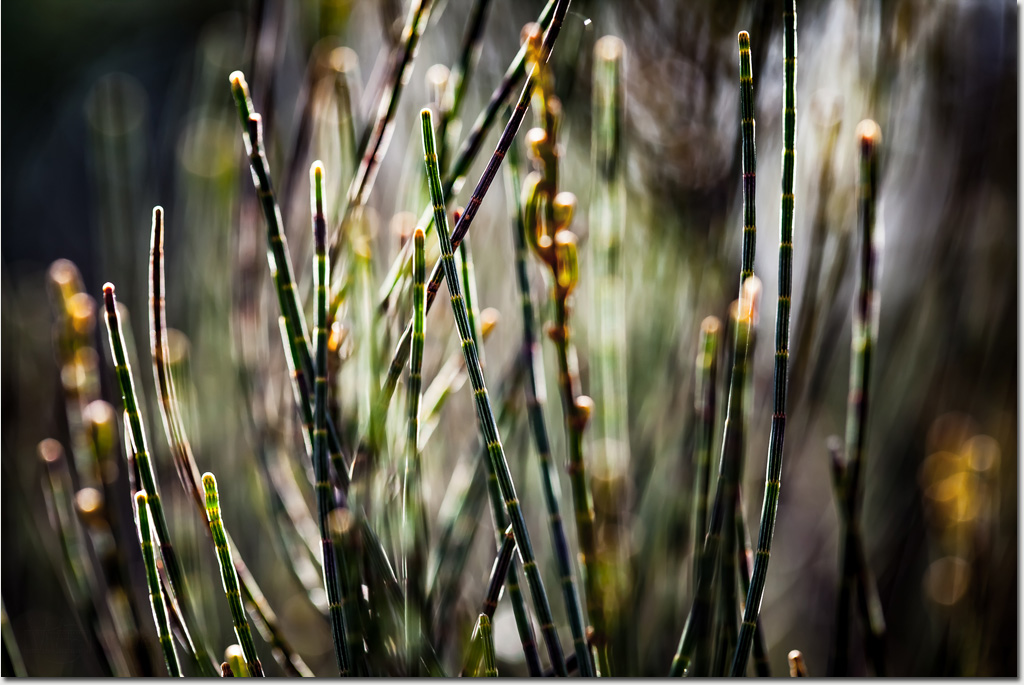
Arid region plants use all sort of tricks to remain hydrated for the months that separate quite often heavy downpours.
These beautiful crystalline structures are not blades of grass but leaves of small shrubby bushes.
Like pine needles the cylindrical tubular leaves seal in the water keeping the internal cellular workings in good shape through searing 45 degree summers ready to capture the water when it finally rains again.
Photo: Robert Rath, 'Crystal Grass' 0.3s f/16 ISO320 15mm
Monday, July 13. 2015
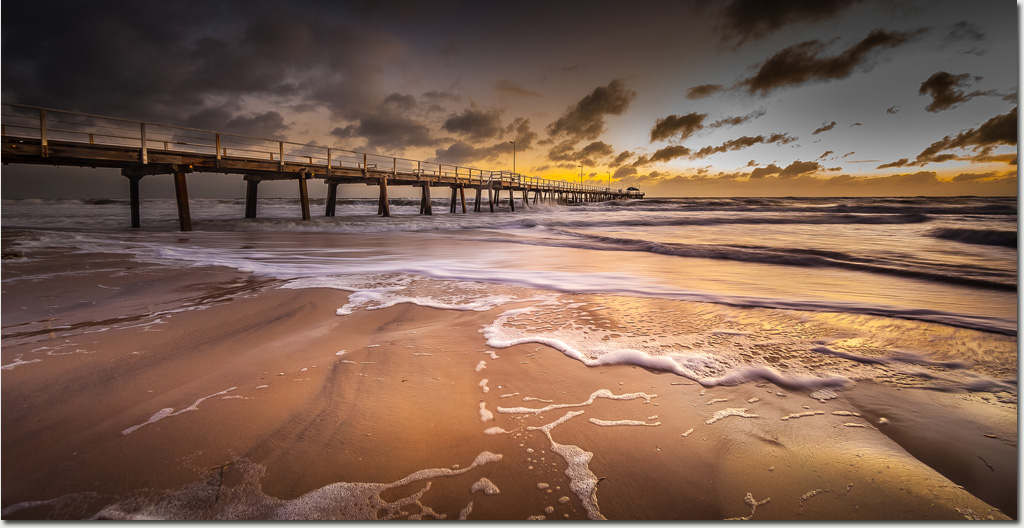
I could not help myself when that golden colour fills the sky my local beach calls.
Now in the middle of winter there is no one to be seen. No one on the jetty and no one on the beach. A few die-hard joggers in full track gear and hoodies dot the esplanade but otherwise the beach is mine.
At least for a while.
Photo: Robert Rath, 'Winter Sunset' 0.3s f/16 ISO320 15mm
Sunday, July 12. 2015
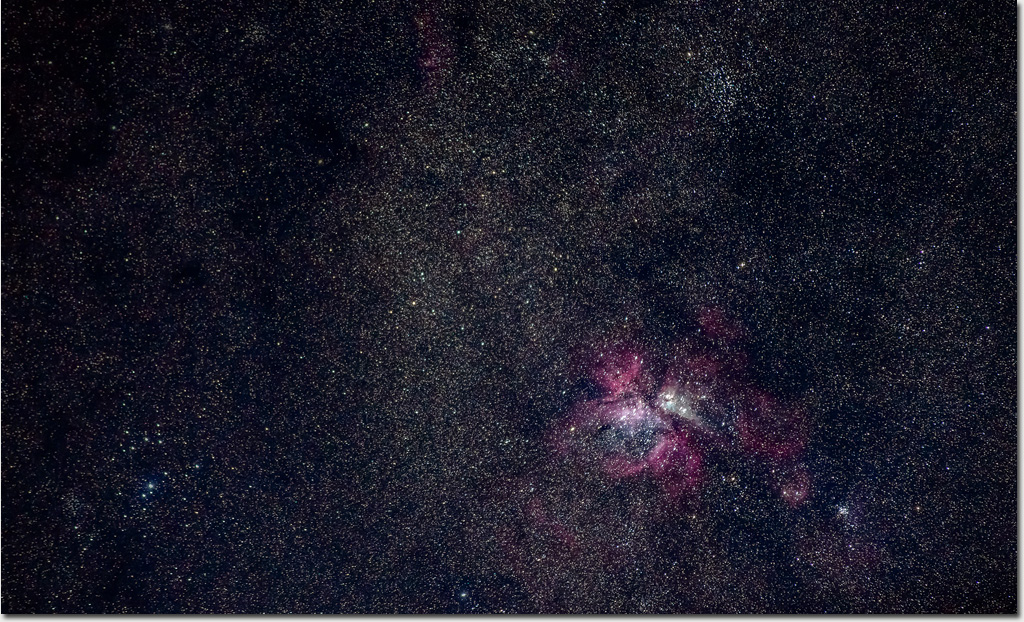
At first I thought about calling this image 'Seeing Stars' but considering the significance of the fabulous Eta Carinae Nebula I felt compelled to give it the attention it deserves.
This tiny piece of the night sky in the Milky Way is only a few widths of the moon across and yet even in this images there are over 10,000 visible stars. In fact the massive star density here somewhat detracts from the stunning beauty of the Eta Carinae Nebula 10,000 light years away.
In the center of the brightest cloud is a giant binary pair of stars called Eta Carinae. Together the pair is around 120 more massive than our sun and shine 5,000,000 times brighter! The two stars circle each other in a deep elliptical orbit every 5.5 years and at their closest are as close together as Mars is from our sun resulting in regular extraordinary interactions.
If you are curious this little NASA video might just wet your appetite for more. NASA Missions Take an Unparalleled Look into Superstar Eta Carinae
Photo: Robert Rath, 'Eta Carinae' 30s f/2.8 ISO1600 200mm
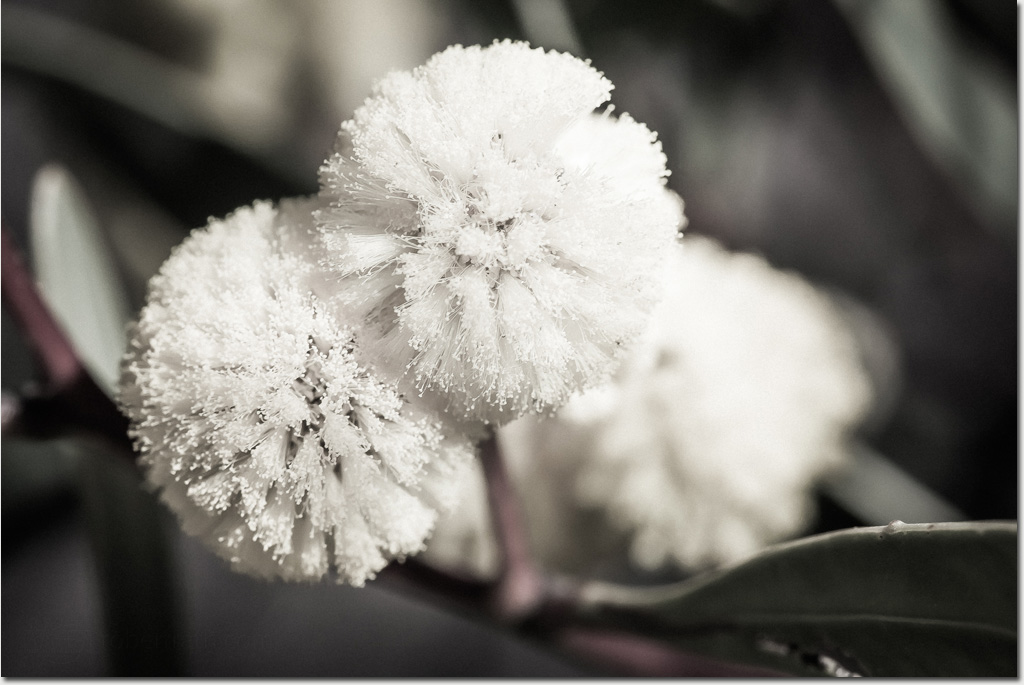
High up on the southern wall of Wilpena Pound we were entreated to some of the most beautiful vistas of the region.
However there were just as many exquisite things up here on a much smaller scale.
Normally we see wattle trees flower in the spring so I was a little surprised to see them beginning to flower high up here in the middle of winter.
Photo: Robert Rath, 'High on Wattle' 1/500s f/16 ISO400 100mm
Thursday, July 9. 2015
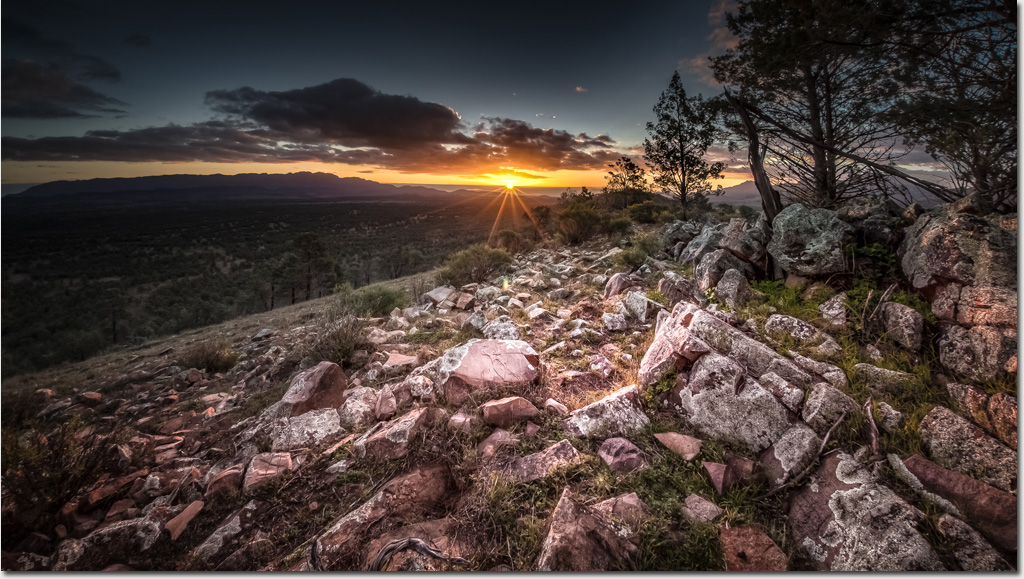
We had just settled into our campsite at Rawnsley Park Station in the Flinders Ranges. Gavin had organised a fire for the evening and the others had transitioned into r e l a x e d mode mode and I was almost ready to join them.
We were at the base of a gully with a steep rise and ridge blocking our view to the west, the Elder Range and the sunset. Out of sight and of mind I'd almost given up on the sunset that night.
I looked at my watch, checked the sunset time, judged the effort to reach the top of the ridge and announced I was off.
Not to one to be left behind, Gavin lept to his feet, grabbed his camera and we were off on a race to the top.
Photo: Robert Rath, 'Race To The Top' 1/25s f/16 ISO100 15mm
Wednesday, July 8. 2015
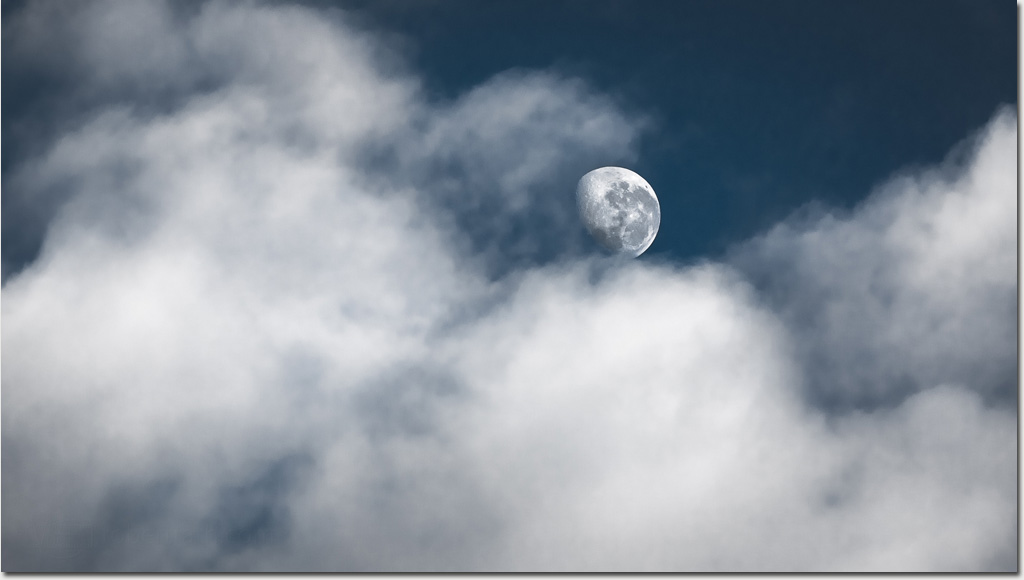
High above the Elder Range a waning gibbous moon makes it's way towards a moonset that will never be seen.
As clouds roll in from the west the moon gets an early night, disappearing beneath snowy white pillows.
Photo: Robert Rath, 'Lunar Pillows' 1/1000s f/4 ISO100 200mm
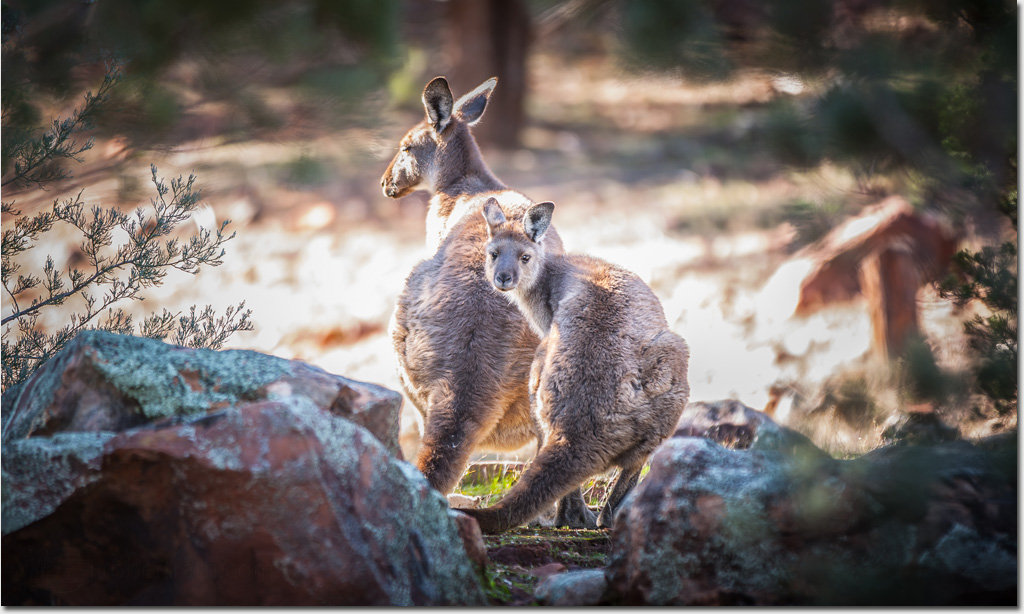
Contrary to popular international belief you will almost never see a kangaroo in the general urban environment.
Venture 30mins to an hour away from any populated center and you will need to watch out for them while driving at night.
Go camping in any of our National parks and they will be an intermittent part of the scenery.
I made this shot on a walk around the outside of Rawnsley's Bluff in the Flinders Ranges. We had spotted the pair, a mother and her adolescent, near a creek but we spooked them and they took off.
On the return walk I held back and walked a little way up the creek where we had spotted them earlier. I sat down and waited. Two minutes later I noticed some movement. They had been watching me all along keeping very still so I almost walked past them. If I had not stopped and become quiet for a while I would have missed them for sure.
So here they are. I called them Kanga and Woo.
Photo: Robert Rath, 'Kanga and Woo' 1/50s f/2.8 ISO100 200mm
Tuesday, July 7. 2015
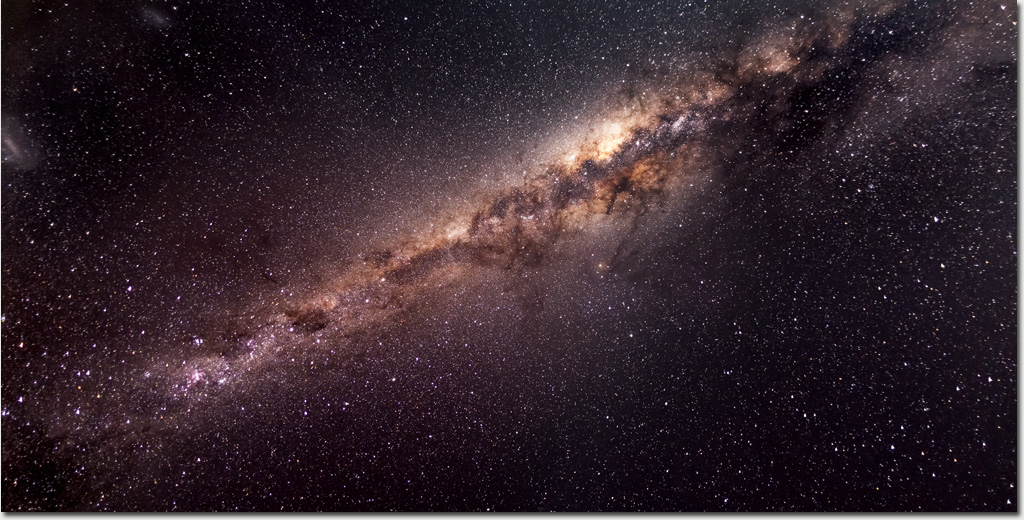
By far the most amazing visual spectacle in the night sky is our very own Milky Way Galaxy. To really appreciate it though you need to be far away from populated regions so that city lights do not mask out the detail.
This weekend I had the good fortune to spend time with my family and friends in the Flinders Ranges, a five hour drive from home. Aside from the rugged beauty of this place the night sky and the Milky Way Galaxy was just amazing.
While working on this image I noticed two smudges in the top left corner I originally thought were clouds. As it turns out they are clouds, the Large Magellanic Cloud (around 163,000 light years distant) is far left while the Small Magellanic Cloud (around 200,000 light years distant) is near the top. Another curious object, the bright star immediately to the left of the bottom of the Large Magellanic Cloud is not a star at all. It is the Tarantula Nebula, one of the most interesting visible non-stellar objects and and probably the most active source of new star formation in our local group of galaxies.
Next time you are out camping or venturing into some remote parts, remember to look up into the night sky and experience the wonder of it.
Photo: Robert Rath, 'The Milky Way' 193s f/2.8 ISO1600 15mm
Saturday, July 4. 2015
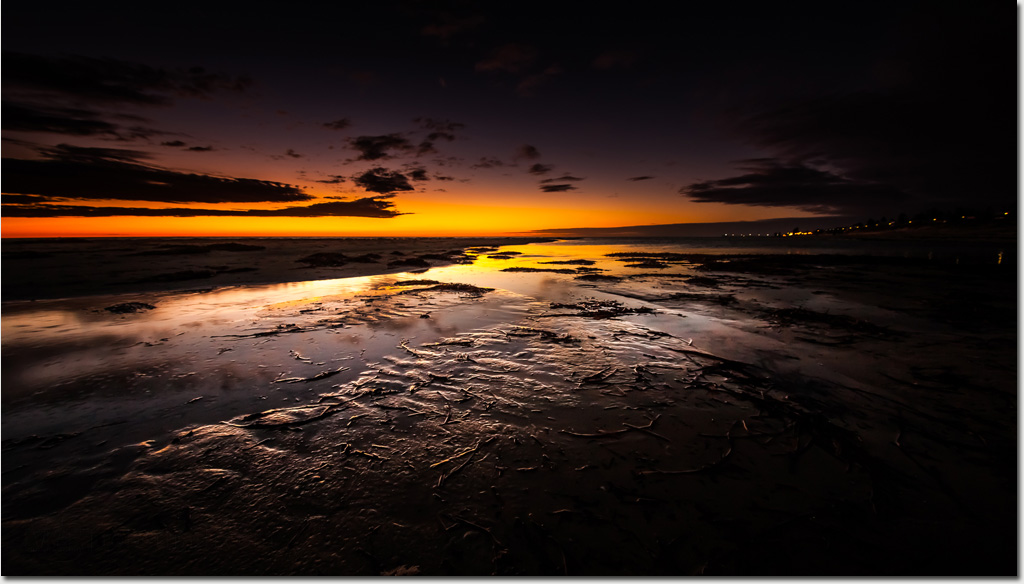
A little while after a golden sunset, when the twilight has almost gone but the stars are still timid is time when water and reflections capture and amplify the last light of the day that was.
Stark and beautiful this light highlights the trickle we call the Torrens River as it finds its way to the sea.
Photo: Robert Rath, 'All Streams Find the Sea' 0.4s f/13 ISO640 15mm
Friday, July 3. 2015
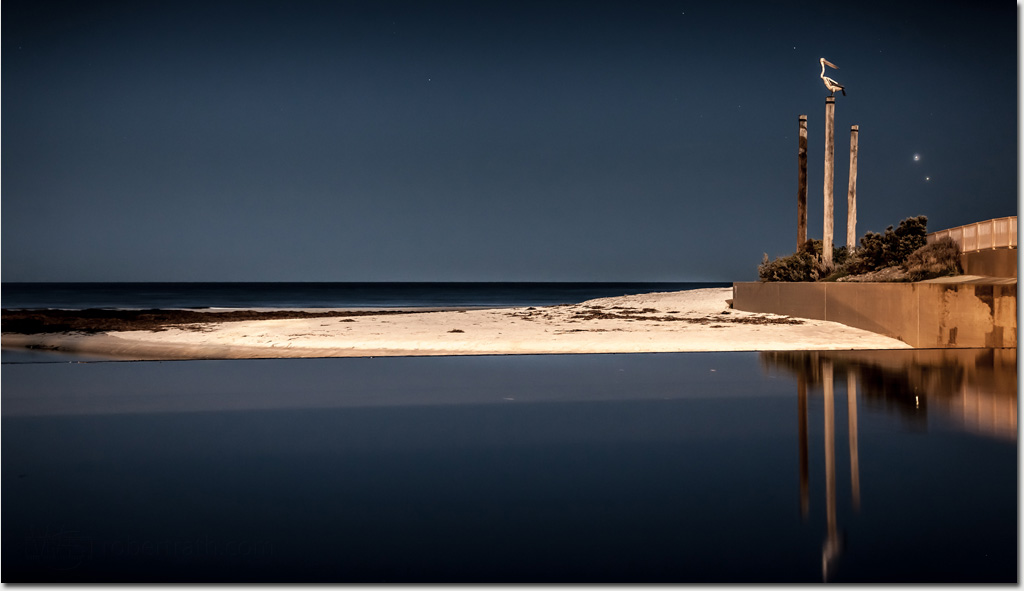
We'll thanks to the heavy cloud last night we missed the conjunction of Jupiter and Venus on the western horizon.
It certainly would not have been a celestial spectacle. Just a curious thing to see and have talked about seeing. Tonight however the sky was clear and I wondered if it would be possible to capture a 'planetset' of either Venus or Jupiter, now some distance apart, dropping over the distant horizon.
While still some way off the horizon the two planets were still quite bright in the sky but as they neared the horizon they faded. First Jupiter, then finally Venus, neither making it visibly over the line.
Photo: Robert Rath, 'Jupiter, Venus and Pelican' 4s f/3.2 ISO1000 70mm
Wednesday, July 1. 2015

With 80's music on my mind I really wanted to call this image 'Girls on Film'.
I looked hard but all their cameras were digital.
I could not claim it for my image for the very same reason.
In fact I'd be very surprised if there was a frame of unexposed celluloid within 500m.
Too bad, I like the title (and the music) so it stays.
Photo: Robert Rath, 'Girls on Film' 1/3200s f/2.8 ISO100 200mm
|